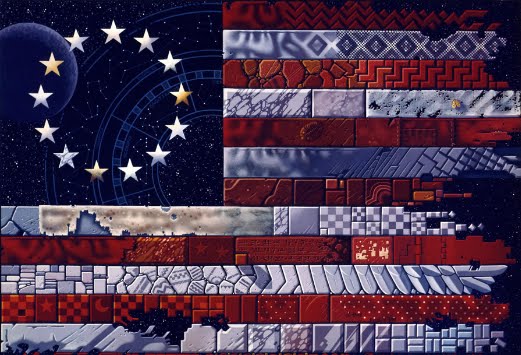''Frontline'' offers a tour de force tonight. Short on pictures of the October 1993 firefight in the Somali capital, ''Ambush in Mogadishu'' provides a compelling account through the memories of United States Army Rangers who found themselves pinned down for 17 hours. Eighteen Americans were killed -- the most memorable picture was of a body being dragged through the streets -- and scores more wounded, with enduring consequences for American foreign policy.
The 90-minute program begins with a well-meant United Nations effort to take food and stability to the chaos of civil war in Somalia. But the killing of 12 Pakistani peacekeepers set off a manhunt for Mohammed Farah Aidid, a powerful and elusive warlord; the United States, with a mission meant to be limited both in duration and scope, became a target in a confusing civil war.
Plenty of blame is distributed by the military officers and intelligence specialists interviewed here. They fault the Clinton Administration's testy relations with the Pentagon, friction within the United Nations forces and faulty intelligence.
The 90-minute program begins with a well-meant United Nations effort to take food and stability to the chaos of civil war in Somalia. But the killing of 12 Pakistani peacekeepers set off a manhunt for Mohammed Farah Aidid, a powerful and elusive warlord; the United States, with a mission meant to be limited both in duration and scope, became a target in a confusing civil war.
Plenty of blame is distributed by the military officers and intelligence specialists interviewed here. They fault the Clinton Administration's testy relations with the Pentagon, friction within the United Nations forces and faulty intelligence.
There seem, too, to have been mixed signals in Washington. It is reported that no one told the commanders in Mogadishu, who were under pressure to capture Mohammed Aidid, that President Jimmy Carter had been entrusted to work out a secret deal with the warlord. (Administration officials declined to talk to ''Frontline.'')
The raid by Rangers and Army Delta Special Forces, following up on a dubious tip from a Somali informer, turned into disaster when a Blackhawk helicopter was shot down and the Americans who came to the rescue were trapped. ''Wait a minute,'' an American soldier says. ''It's not supposed to work like this, you know. We're Americans, you know: we're the ones dictating the game here.''
Most of the second half of ''Ambush in Mogadishu'' is given to a description of the fighting as the Rangers moved into the mazelike alleys to save the downed helicopter crew only to find themselves under heavy fire from the Aidid gunmen who were waiting for them. ''It was just crazy,'' one Ranger says. ''We were getting shot from all over the place.'' Another says, ''There were Rangers with blood on their uniforms, people looking haggard and tired. There was just carnage.'' (The Somalis say they lost 350 fighters.)
The program suggests that a legacy of Somalia, which one of tonight's critics calls ''a failed political military operation,'' was the reluctance of Washington to be drawn into other danger spots like Bosnia and Rwanda. One critic says policy makers were left ''actually not knowing what to do at all.''
FRONTLINE
Ambush in Mogadishu
PBS, tonight
(Channel 13, New York, at 9)
Written, produced and directed by Bill Cran; Kate Leonard-Morgan, production manager; Lisa A. Jones, line producer; Carlos Mavroleon, field producer in Somalia. For ''Frontline'': Michael Sullivan, executive producer; David Fanning, senior executive producer. A Frontline production with Invasion Productions, Ltd., in association with the BBC-2. Will Lyman, narrator; William Scott Malone, reporter.
The raid by Rangers and Army Delta Special Forces, following up on a dubious tip from a Somali informer, turned into disaster when a Blackhawk helicopter was shot down and the Americans who came to the rescue were trapped. ''Wait a minute,'' an American soldier says. ''It's not supposed to work like this, you know. We're Americans, you know: we're the ones dictating the game here.''
Most of the second half of ''Ambush in Mogadishu'' is given to a description of the fighting as the Rangers moved into the mazelike alleys to save the downed helicopter crew only to find themselves under heavy fire from the Aidid gunmen who were waiting for them. ''It was just crazy,'' one Ranger says. ''We were getting shot from all over the place.'' Another says, ''There were Rangers with blood on their uniforms, people looking haggard and tired. There was just carnage.'' (The Somalis say they lost 350 fighters.)
The program suggests that a legacy of Somalia, which one of tonight's critics calls ''a failed political military operation,'' was the reluctance of Washington to be drawn into other danger spots like Bosnia and Rwanda. One critic says policy makers were left ''actually not knowing what to do at all.''
FRONTLINE
Ambush in Mogadishu
PBS, tonight
(Channel 13, New York, at 9)
Written, produced and directed by Bill Cran; Kate Leonard-Morgan, production manager; Lisa A. Jones, line producer; Carlos Mavroleon, field producer in Somalia. For ''Frontline'': Michael Sullivan, executive producer; David Fanning, senior executive producer. A Frontline production with Invasion Productions, Ltd., in association with the BBC-2. Will Lyman, narrator; William Scott Malone, reporter.









